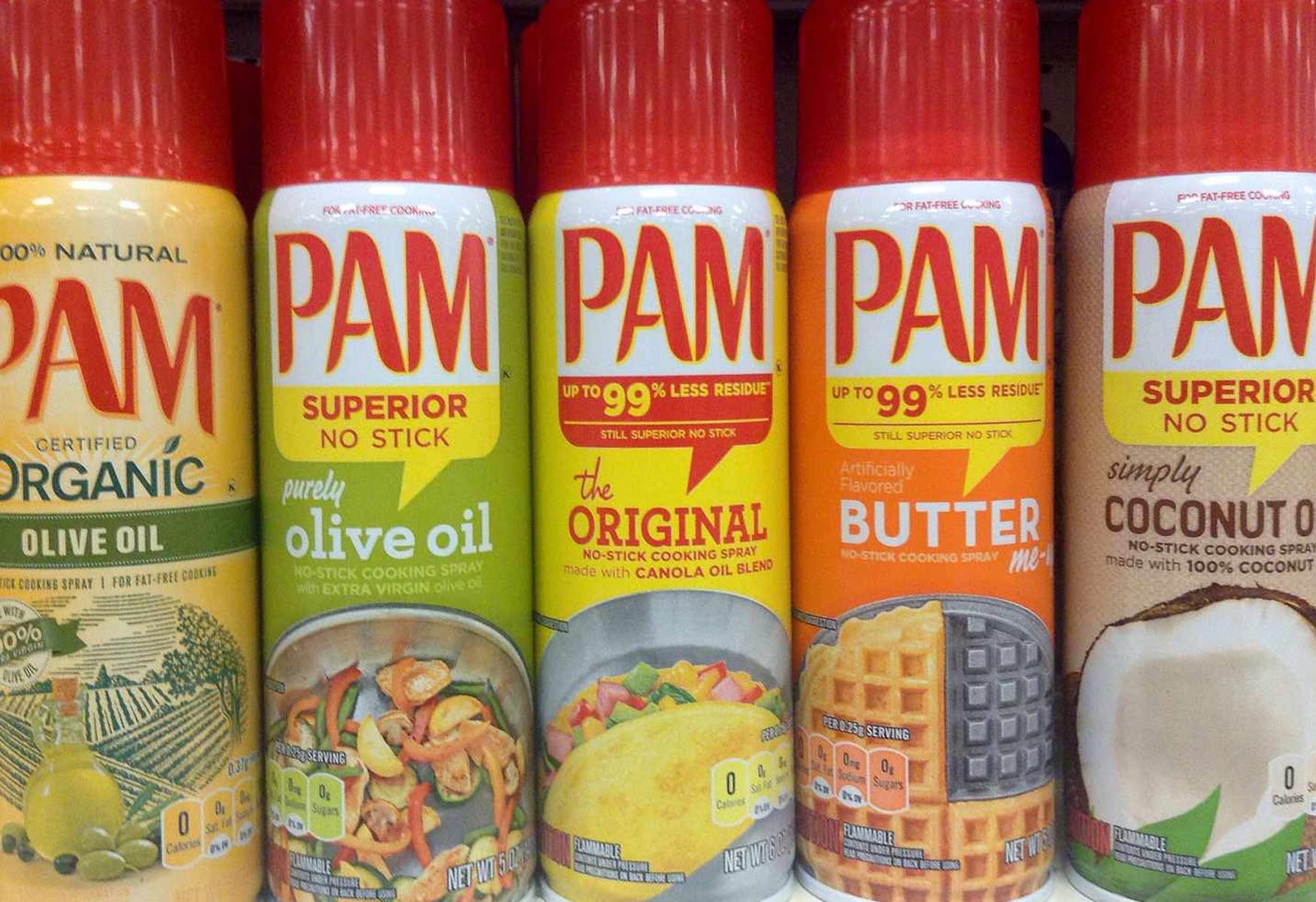
When it comes to cooking, we often rely on various methods to enhance the flavors and textures of our dishes. From using oils to butter, there are many options available. However, one popular alternative that has gained traction in recent years is cooking spray. Cooking spray provides a convenient and easy way to grease pans, prevent sticking, and reduce overall fat content in our meals.
In this article, we will explore the nutrition facts of cooking spray and how it can be a valuable addition to your culinary arsenal. We will delve into the calorie content, fat composition, and potential health benefits of using cooking spray as a cooking medium. So, whether you’re a health-conscious individual or just looking for a practical cooking tool, understanding the nutrition facts of cooking spray will help you make informed choices in the kitchen.
Key Takeaways:
- Cooking spray is a low-calorie, fat-free, and cholesterol-free option that adds essential nutrients to your dishes. It’s versatile, non-stick, and free from artificial ingredients, making it a healthy and convenient choice for cooking.
- By using cooking spray, you can reduce oil consumption, enjoy long shelf life, and avoid added sugar in your recipes. It’s a simple way to make healthier cooking choices and maintain a balanced diet.
Low in Calories
One of the top nutrition facts about cooking spray is that it is low in calories. This makes it an ideal choice for those looking to reduce their calorie intake while still enjoying delicious dishes.
Zero Fat Content
Cooking spray has zero fat content, making it a healthier alternative to traditional oils or butter. It allows you to enjoy the flavors and textures of your favorite recipes without the added fat.
Cholesterol-Free
Another important nutrition fact is that cooking spray is cholesterol-free. This is great news for individuals watching their cholesterol levels and wanting to maintain a heart-healthy diet.
Provides Essential Nutrients
Cooking spray contains essential nutrients such as Vitamin E, which acts as a powerful antioxidant in the body. It helps protect cells from damage and supports overall health and well-being.
Versatile Usage
One of the great things about cooking spray is its versatility. It can be used for various cooking methods like sautéing, grilling, baking, and even air frying, making it a convenient option for any recipe.
Non-Stick Properties
Cooking spray’s non-stick properties make it a favorite among home cooks and professional chefs alike. It prevents food from sticking to the pan, resulting in easier cooking and cleanup.
No Artificial Ingredients
When choosing a cooking spray, look for one that is made with natural ingredients and free from artificial additives. This ensures that you are using a product that is wholesome and free from unnecessary chemicals.
No Added Sugar
Cooking spray is a sugar-free option, making it suitable for individuals who are following a low-sugar or diabetic-friendly diet. It allows you to enhance the flavors of your dishes without adding any extra sweetness.
Helps Reduce Oil Consumption
Using cooking spray instead of pouring oil directly onto your dishes can help reduce overall oil consumption. This can be beneficial for maintaining a balanced diet and managing calorie intake.
Long Shelf Life
Cooking spray has a long shelf life compared to other cooking fats. It can be stored for an extended period without the risk of spoilage, providing a convenient and reliable option for everyday cooking.
Conclusion
In conclusion, cooking spray is a convenient and popular option for greasing pans and cooking surfaces. However, it’s important to be aware of the nutrition facts and ingredients in cooking sprays. While they can be a lower-calorie alternative to traditional oils and fats, it’s still necessary to use them in moderation. Pay attention to serving size and be mindful of any potential allergens or additives. By understanding the nutrition facts of cooking sprays, you can make informed choices and incorporate them into your cooking routine responsibly.
FAQs
Q: Are all cooking sprays the same?
A: No, not all cooking sprays are the same. They can vary in terms of ingredients, cooking temperatures, and nutritional profiles. It’s important to read the labels and choose a cooking spray that suits your specific needs.
Q: Can cooking sprays help reduce calories in cooking?
A: Cooking sprays can be a lower-calorie option compared to using traditional oils and fats. However, it’s still important to use cooking sprays in moderation, as excessive use can add up in terms of calories.
Q: Can cooking sprays be used for all types of cooking?
A: Cooking sprays are versatile and can be used for a variety of cooking methods, including sautéing, baking, grilling, and roasting. However, it’s essential to check the instructions on the specific cooking spray product to ensure it can withstand the desired cooking temperature.
Q: Are there any potential health concerns with using cooking sprays?
A: While cooking sprays are generally safe to use, it’s important to be aware of any potential allergies or sensitivities to specific ingredients. Additionally, some cooking sprays may contain additives or propellants, which individuals may want to avoid. Reading the labels and choosing cooking sprays with minimal ingredients can help mitigate any potential health concerns.
Was this page helpful?
Our commitment to delivering trustworthy and engaging content is at the heart of what we do. Each fact on our site is contributed by real users like you, bringing a wealth of diverse insights and information. To ensure the highest standards of accuracy and reliability, our dedicated editors meticulously review each submission. This process guarantees that the facts we share are not only fascinating but also credible. Trust in our commitment to quality and authenticity as you explore and learn with us.
